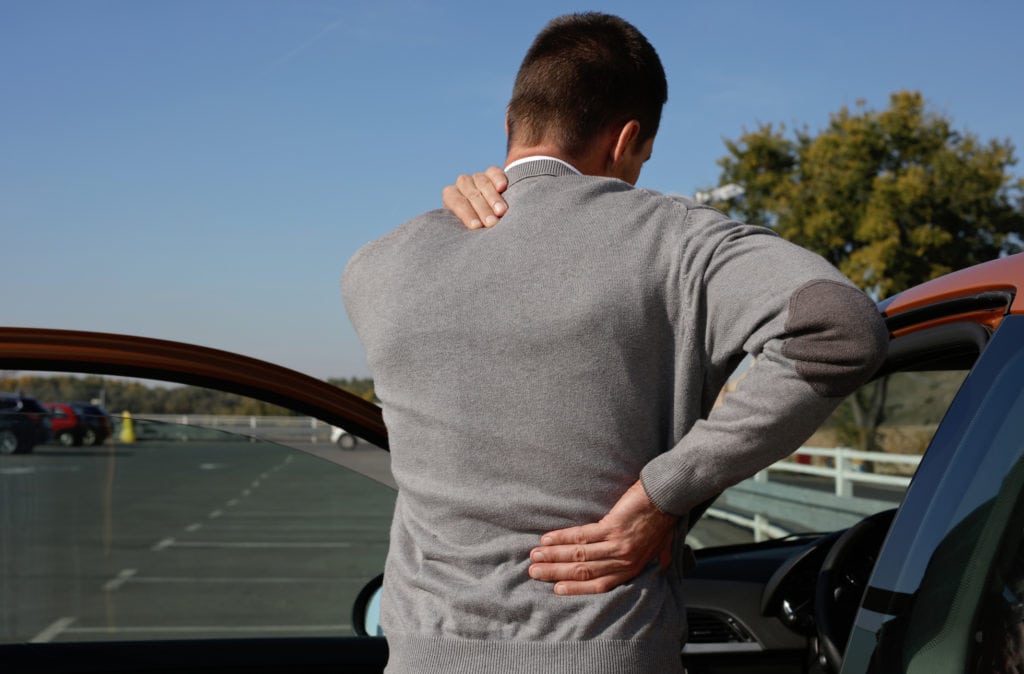
One million is the number of days each year that Americans spend in the hospital due to injuries associated with car crashes, according to the Centers for Disease Control. Records don’t indicate the number of patients who presented in hospitals or emergency rooms due to back injuries and pain following an accident. However, it makes sense that back pain is one of the most common injuries following a car crash.
Whiplash
Back pain is associated often times with whiplash, which is primarily a head and neck injury that will result in back pain following a rear-end car accident.
Unfortunately, whiplash and the resulting back pain that accompanies it, isn’t always taken seriously. Unscrupulous individuals have misused the term whiplash to scam insurance companies out of lucrative settlements. However, whiplash is a real issue, as is the back pain following a crash.
An explanation of how whiplash occurs clearly underscores the severity of the injury and how it would indeed cause significant back pain. Whiplash occurs when the head and neck is thrown into a hyperextended position. This backward motion simultaneously occurs as the torso is thrown forward. Soon after, the head and neck return to the correct position, but violently so, and into a hyperflexed position. The cervical spine takes on an “S” shape following impact, causing damage to the tissue, ligaments, and muscles that connect the cervical vertebrae. The symptoms surrounding whiplash might not occur immediately.
Trauma Resulting in Stress Fracture
Trauma to a vertebra during a car accident, resulting in a stress fracture will certainly cause back pain. Trauma is one of the causes of spondylolisthesis. The condition primarily occurs at the spine’s base and can be defined as “slipping vertebra.” In a car accident, one or both of the butterfly-shaped parts of the vertebrae could fracture.
First Order of Business
If you experience back pain following a car accident, the very first order of business is to see a doctor for a diagnosis. He or she will determine the severity of your injury. If a patient is taken to the hospital by ambulance and was complaining of back pain following the accident, the paramedics would have immobilized the neck with a special collar. This is to prevent further damage to the neck or spine. A physician will also order tests, such as an MRI, X-Ray or Catscan that will provide detailed images of the neck/spine. An injury to either can cause back pain and other severe issues. These images will help the doctor diagnose the situation and to know how to move forward.
Managing Back Pain Following a Car Accident
Follow your health professional’s advice, but with permission, there are a number of steps you can take to treat back pain associated with a car accident. Whiplash heals on its on. All it takes is time. However, as with a stress fracture (spondylolisthesis), whiplash will respond to over-the-counter, nonsteroidal, anti-inflammatory painkillers.
To ease pain connected to whiplash, the patient may also apply moist heat, but only after applying ice to the neck for 2 or 3 days. A neck brace isn’t recommended for long-term use, however, your doctor may approve using one initially for support. Long-term use could have an opposite effect, weakening neck muscles.
Do not ignore back pain following a car accident. See a health professional right away. Ignoring symptoms could prove costly to your health and future mobility.


